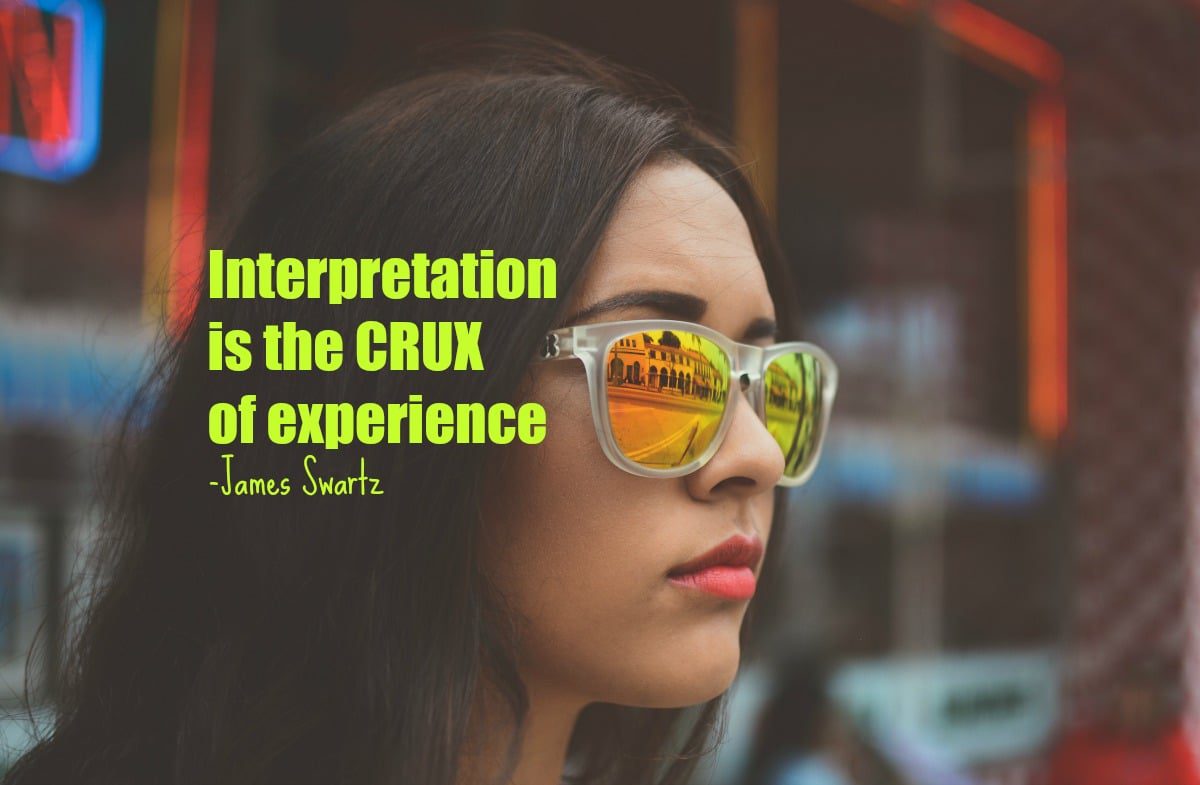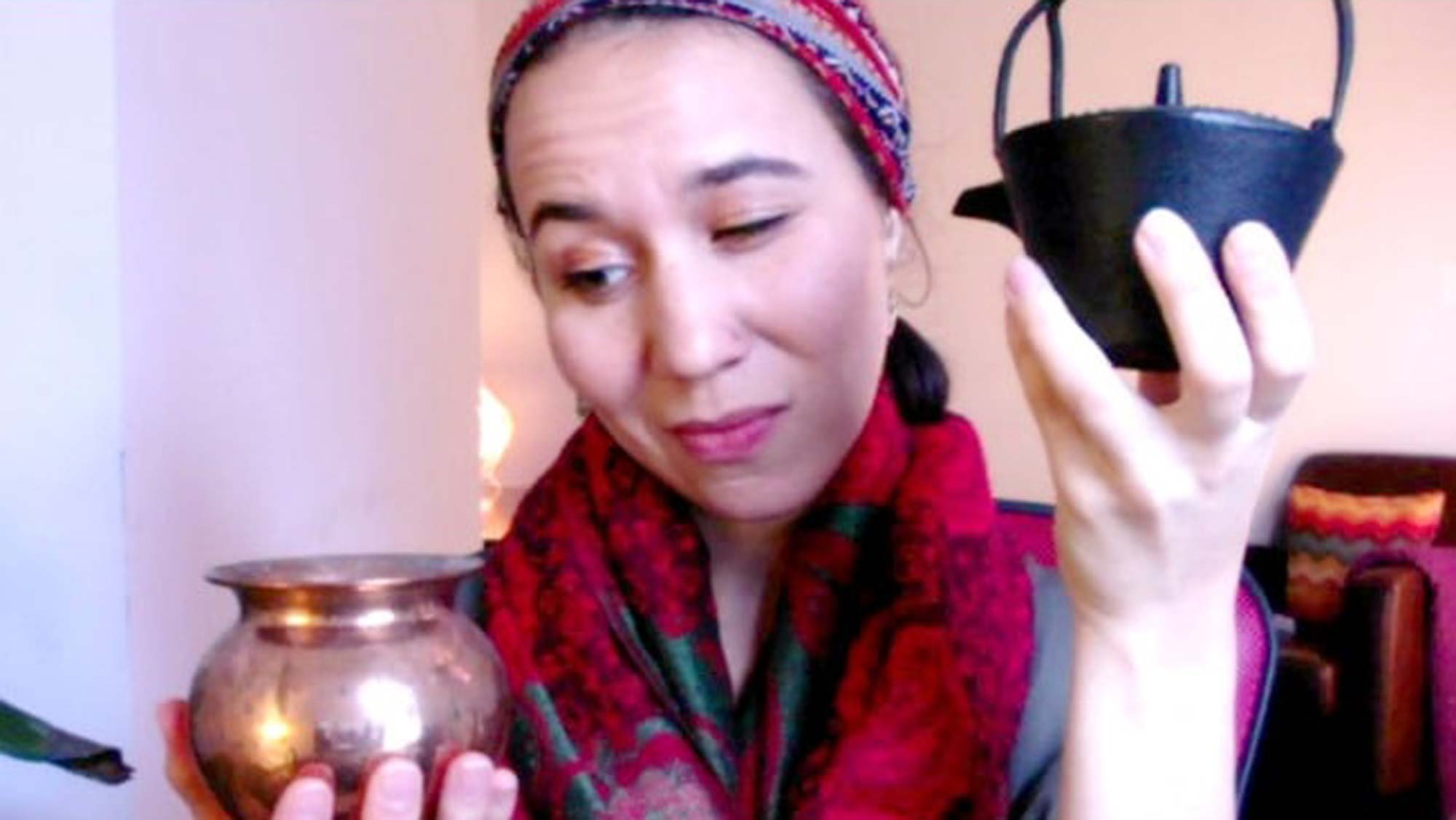Let’s look at a very palpable (and most pleasant) effect of a regular meditation practice: stripping the “problematic-ness” out of the situations that you call your “problems.”
In other words, with regular practice, things that felt beyond your capacity to handle with ease, grace or stresslessly, will suddenly feel more manageable, less stressful or not stressful at all.
The conditions that you considered to be problematic may remain, but you don’t consider them problematic anymore.
Not a bad deal for 15 minutes of seated meditation per day! (And yes, if you stick to it, as little as 15 minutes per day can make this kind of a difference.)
To learn more, watch the video below or scroll on to read the article:
The mechanism: how meditation boosts equanimity
Let’s look at the mechanism of how meditation helps achieve this result of taking the “problem” out of problems.
To begin, let’s look at the anatomy of a problem.
A problem is essentially made up of two things:
- A circumstance or situation
- Your interpretation of that circumstance (as problematic)
We all know that we can’t always control the circumstance. Most of the control we exercise is on the interpretation of the circumstance.

We reduce our control when we mistaken our interpretations for facts
But we can’t exercise this degree of control when we mistaken our interpretations for facts.
It is easy to take our interpretations to be factual, because our interpretations are based on things that are VERY firmly entrenched in our psyches. Things such as conditioning, fears, desires, likes, dislikes, emotional patterns, and so forth.
It takes a lot of lucidity to tell the difference between an interpretation and the facts in real-time, as life comes at you.
That’s one level where meditation can help.
As we discussed in this article and video, by repeatedly turning inward, a meditation practice helps sensitize you to the subtle objects of your inner experience.
With regular meditation, you will be better able to identify and observe:
- what is happening within your awareness,
- the factors that color your interpretations of the world.
By sensitizing yourself in this way, you will also simply be able to tell the difference between an interpretation or strongly held belief and an objective fact of a situation.
An important disclaimer
This is not to say that you can be entirely free of your personal filter and leap-frog over interpretation to viewing a situation with absolute objectivity.
But you can learn to interpret situations in a way that is less “overlayed,” less negative, and more accurate. This mental capacity grows when you become more aware of (and more honest about) the personal baggage and filters that helps form your interpretations.
Settle your mind for more peace and more clarity
Another way a regular meditation practice helps you interpret a situation with more clarity is by helping settle your mind over time.
An untrained mind is like a glass of muddy water. Without giving them your full attention, you collect thoughts emotions and feelings that swirl about in your psyche as you go about your day. Meditation takes that muddy glass and sets it on a table. The stillness allows the sludge to filter out and sink to the bottom. The water–your mind–is clarified. A clear mind is like a polished mirror, better able to accurately and neutrally reflect situations.
A calm, undisturbed mind is less likely to overlay emotions and biases on top of a given situation. Therefore, the mind is less likely to interpret the situation in a warped way.
When we minimize the heaping of likes, dislikes, fears, desires and conditioning onto the facts of a situation, we are less likely to interpret the situation negatively– ie, to label it as a problem.
So by 1) getting you sensitized to your inner biases and 2) creating a calm, clear-seeing mind, meditation can help you take the problematic-ness out of situations you once saw as problems.
This is fantastic news given that we spend all day worrying about or trying to fix things that we perceive as problems–either avoiding things we don’t want or grasping at things we do want. It’s time consuming and exhausting! And a lot of it is unnecessary.
And yes, over time, you can feel the difference with as little as 15 minutes of meditation per day.
A meditation exercise to try
- Find a quiet place, sit down, keep your back straight, set your timer and close your eyes.
- Focus on the feeling of our breath going in and out of our nostrils.
- When you become distracted from this task by a thought, that is GREAT! It’s the opportunity to practice noticing thoughts, beliefs and perceptions as they arise, and how they color your interpretations.
- Simply acknowledge the thought, perception or feeling that distracted you from the breathing task, and gently bring your attention back to your breathing.
This will ultimately sensitize you to all of your long-held thought patterns that:
- shape the way you interpret–and therefore experience–situations,
- typically go under the radar.
This is a great way to bring awareness to how you are really coming to your conclusions. Your conclusions directly color how you experience life, so it’s worthwhile to understand them.
So many benefits to having a meditation practice
Fewer perceived problems is just ONE of the myriad benefits of a regular meditation practice. Explore our videos-articles covering several other benefits below.
- Give yourself a daily vacation with a meditation practice More vacation time with a meditation practice
- Prime your mind to investigate the BIG questions in life with meditation Develop more mental clarity to advance your truth-seeking and deep-thinking
- How to take the ‘problem’ out of your ‘problems’ (meditation to the rescue) Strip the problematic-ness from your problems
- How meditation helps you be less judgmental (and more discerning) Judge less, discern more (and how that makes you happier)
- Use meditation to generate (and spread) positive feelings Generate positive feelings (and spread them) with loving-kindness meditation
- How meditation makes negative feelings more manageable in your day-to-day life Make negative feelings more manageable with this simple technique
- How meditation makes you more like Neo from The Matrix
- Meditation gets you FOCUSED (and therefore happier, and more productive) Train your mind to be more focused (making you happier and more productive)
- Sensitize yourself to the subtleties of experience with meditation Sensitize yourself to the subtle (yet POWERFUL) thoughts and emotions that determine how you interpret the world
- Cultivate the World’s Most Useful Attitude with meditation Develop life’s #1 most useful attitude with meditation: that of acceptance (and why practicing acceptance does NOT make you a doormat)
Questions or comments about meditation or your meditation practice?
We’d love to hear them! Please leave them in the comments below.







